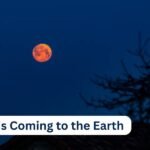Scientific Asia: Northern U.S. sky-watchers could experience several stunning aurora shows.
Key Facts
- On Thursday, the sun unleashed an X9.0 solar flare, marking the most powerful eruption of its current solar cycle. This flare surpassed the X8.7 flare that triggered May’s vivid lights. The sun unleashed a tremendous X7.1 solar flare on Wednesday.
- Coronal mass ejections, or eruptions of solar material, are known to result in sightings of the Northern Lights. Between Friday and Sunday, two CMEs are predicted to impact Earth.
- The National Oceanic and Atmospheric Administration has upgraded all geomagnetic storm watches issued for Thursday through Saturday to intense G3 storms, and they now also cover Sunday.
- According to NOAA, the aurora on Friday night has a Kp index of five, which indicates that if the weather is ideal, there will be more activity as the lights get brighter and “quite attractive to look at.”
- As the sun’s 11-year solar cycle, known as Solar Cycle 25, approaches its predicted peak between late 2024 and early 2026, solar activity has been exceptionally active recently. Over the next year, forecasts suggest that sunspots will intensify, likely leading to more geomagnetic storms.
This weekend, two powerful geomagnetic storms may once again provide millions of Americans with an amazing display of the northern lights, according to NASA analysts.
The Space Weather Prediction Center of the National Oceanic and Atmospheric Administration issued “strong” geomagnetic storm watches in response to recent solar explosions that caused several “coronal mass ejections,” or eruptions of solar material. Friday through Sunday could see aurora borealis displays as a result of this.
Where you may have the chance to spot them
The Space Weather Prediction Center in Boulder, Colorado, has released its official forecast, which states that geomagnetic storms may produce circumstances that allow people in northern Canada and the United States to see the northern lights.
In particular, “many of the northern states and some of the lower Midwest to Oregon may see the aurora.”
States as far south as Massachusetts in the Northeast and Illinois and Iowa in the Midwest may be visible, according to forecast maps.
Aurora forecast for Friday, Oct. 4. (NOAA)
Aurora forecast for Saturday, Oct. 5. (NOAA)
How you can monitor them
The NOAA website provides short-term aurora forecasts ranging from 30 to 90 minutes before they appear. There are also several applications. Daisy Dobrijevic of Space.com suggests two apps: My Aurora Forecast & Alerts, which is accessible for both iOS and Android, and the SpaceWeatherLive app, which is also available on iOS and Android.
The perfect time for viewing them
Auroras are frequently visible to the naked eye shortly after sunset or just before daybreak in locations free of light pollution. You can also capture them using a camera or smartphone.
According to NOAA, they can be seen from hundreds of miles away if the conditions are ideal.
In May, for example, an abnormally intense solar storm caused vivid northern light displays over the northern hemisphere.
Why has there been a rise in solar activity lately?
Though it may seem unexpected, space analysts have been looking for what they call “solar maximum” activity in 2025.
Storms and aurora displays are more common because the sun’s magnetic field is near the pinnacle of its 11-year cycle, according to a recent Associated Press explanation.
This news was Published was on Yahoo platform.













